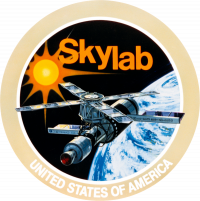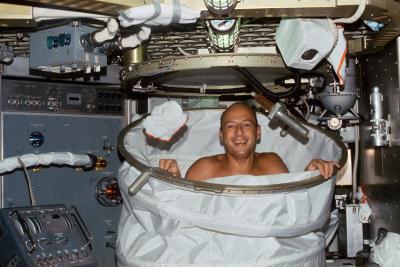Skylab

Credit: NASA
Skylab was the first space station launched by the United States of America. NASA controlled and maintained the station in orbit around the Earth from 1973 to 1979. Inside Skylab, there was a workshop, a solar observatory, science equipment, and a living space for its crew.
NASA built Skylab to study the Sun and to prove humans could live in space for long periods of time. Skylab's instruments observed the Sun in different wavelengths of light. The mission also tested new technology and observed a comet. NASA also used Skylab to learn how much radiation the crew were exposed to in space. On Earth the air protects us from space radiation. In space, it is a bigger risk to human health.
NASA sent Skylab into orbit around the Earth using a Saturn V rocket on 14 May 1973. They used the same type of rocket to launch the Apollo missions to the Moon. Between 1973 and 1974, 3 groups of 3 astronauts travelled to Skylab. A total of 9 astronauts lived on the space station.

Credit: NASA
The Skylab missions were the first to regularly include a scientist as part of a space crew. The crew spent time doing science experiments, making repairs to the craft, doing chores and exercising. The crew relaxed by looking out of the window at the Earth. There was a zero-gravity shower which the crew could use once a week to keep clean.
NASA expected Skylab to orbit the Earth for 8 to 10 years. However, in 1977 NASA discovered its orbit was bringing it closer to Earth. On 11 July 1979, Skylab re-entered the Earth's atmosphere, burning and breaking into pieces as it fell. Some pieces of Skylab fell over the Indian Ocean and Australia but no one was harmed. People in South Africa and Australia saw colourful lights in the sky - this was Skylab returning to Earth.

